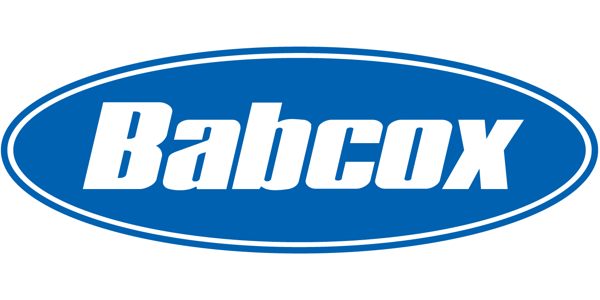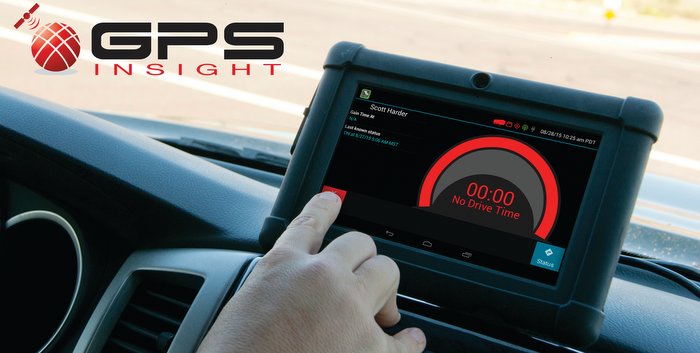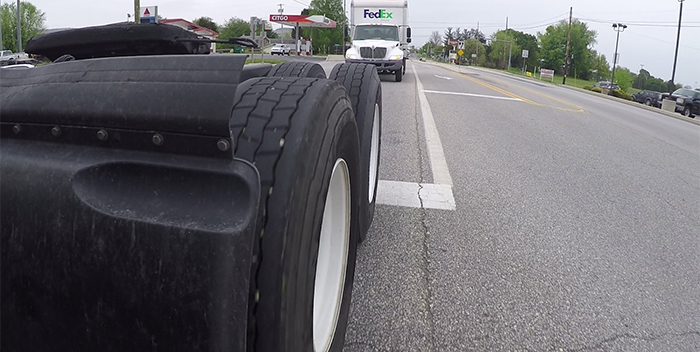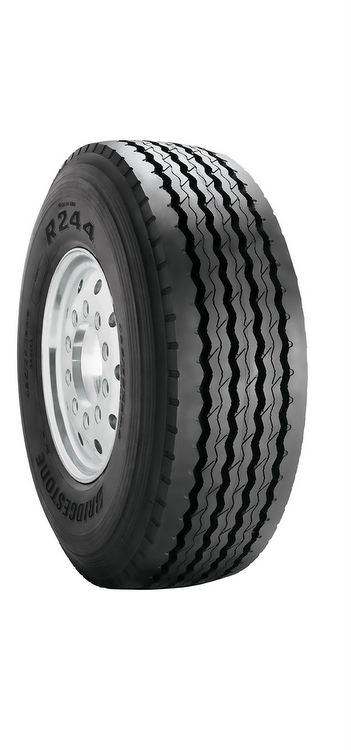Although there is no dictionary definition of a clean fleet, it is generally understood that the term would be used to describe a fleet that has made significant efforts to minimize its impact on the environment. This, of course, would suggest that it is one that specs fuel-efficient road equipment that complies with current emissions regulations, and has developed a preventive maintenance program to keep that equipment compliant.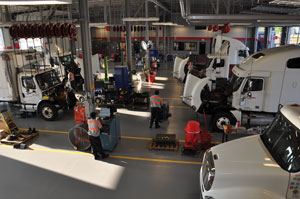
The term also suggests it is a fleet that addresses controlling waste generation in its shop or shops. Although individual fleet maintenance facilities do not usually generate a lot of hazardous waste, when taken together, they could represent a significant source of pollution if potential problems are not addressed and monitored by individual fleet managers.
Fleet managers ultimately are responsible for determining whether the wastes generated in their shops are regulated as hazardous wastes. If you suspect that a waste may be hazardous but are not sure, either assume that it is hazardous and pay for proper waste disposal or recycling, or have the waste tested to get a definitive determination.
Local laboratories and hazardous waste disposal companies can sample and test waste using approved methods. The test results will tell you whether the waste is hazardous or not. If it is found to be not hazardous, and if both the chemicals and processes used to generate that waste do not change, you can rely on the test results for that one sample as proof that the waste is not hazardous in the future.
If it is determined that you generate hazardous waste at your facility, it is a good practice to always keep any other waste separate from your hazardous materials. This can reduce or eliminate the mixing and/or contamination of wastes, which could increase disposal costs.
If, like most truck maintenance facilities, yours generate less than 220 lbs. per month of hazardous wastes (about 27 gal.), you officially become a Conditionally Exempt Small Quantity Generator (CESQG), which has significantly fewer hazardous waste requirements to comply with and many more waste management options. In addition to local air pollution regulations and wastewater discharge rules, a CESQG need comply with only three basic hazardous waste management requirements:
•Identify all hazardous waste generated;
•Do not store more than 2,200 lbs. (275 ga.) of hazardous waste on-site at any one time;
•Reuse or recycle your waste on-site, or ensure delivery of hazardous waste to one of the following:
1. A regulated hazardous waste treatment, storage or disposal facility;
2. A facility permitted, licensed or registered by the state to manage municipal or industrial solid waste;
3. A facility that legitimately uses, reuses or recycles waste or treats the waste prior to its use, reuse or recycling;
4. A household hazardous waste collection center run by a state or local government, if available.
Liquid waste sources
Most shops include procedures that generate liquid waste that might be considered hazardous.
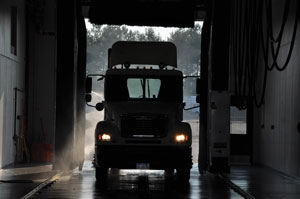
Waste solvents and solvent sludge from parts washers should be considered to be hazardous unless laboratory tests of representative samples demonstrate otherwise. In particular, spent brake washing solvent is very likely a hazardous waste. To deal with waste solvents, the most common practice has been to hire a recycling company to remove and replace used parts washing solvent.
While this is an acceptable practice, a better solution is to switch to an aqueous or other cleaning system using something other than hydrocarbon fluids. Even after such a change, however, you still may be faced with a requirement to dispose of hazardous waste. The EPA refers to two studies in which 75% of waste aqueous solutions tested positive as hazardous wastes because of their lead and cadmium concentrations.
Coolant changes generate the need to either recycle the waste antifreeze or hire a disposal company. Waste antifreeze may be hazardous depending on its metal concentration; it is your responsibility to determine whether the antifreeze is reusable or is a waste fluid.
When practical, you may recycle antifreeze on-site using a distillation or other acceptable recycling unit. Or, you can bring used antifreeze to a recycling service in your area. Some recycling services will come to your location, recycle your waste antifreeze and leave the recycled product for your future use.
Waste antifreeze is solution that is too old or contaminated to be reused. Test results show that used antifreeze may contain lead, benzene and other contaminants at levels that make it hazardous.
For shop clean-up, used rags and paper towels are very likely to be a hazardous waste if they are contaminated with gasoline or solvent. In addition, if any contaminated towels or rags were used with a solvent that contained 10% or more of an EPA F-listed chemical (see sidebar pg. 43), they must be considered as hazardous waste and not disposed of in normal trash. According to the EPA, they must be laundered by an industrial laundry before being reused or disposed of as a hazardous waste.
| F-Listed Chemicals An F-Listed chemical is one that makes any waste it contaminates a hazardous waste, no matter what its concentration in the waste. Even one drop of an F-listed chemical on a shop rag, in absorbent or in used oil or antifreeze is enough to make it all a regulated hazardous waste. Check the Material Safety Data Sheet for each product you use. If the product is an aerosol or liquid solvent (parts cleaner, brake cleaner, etc.) and has any of the following chemicals in it at a concentration of 10% or more, all waste streams contaminated by the product must be properly managed as hazardous wastes: acetone, methanol, 1,1,1-trichloroethane, methyl ethyl ketone, methyl isobutyl ketone, xylenes, benzene, ethyl benzene, toluene, perchloroethylene, trichloroethylene and dichloromethane (methylene chloride). |
Mop water is generally nonhazardous and able to be disposed of in a sanitary sewer, provided that all floor spills are first cleaned up using dry clean-up methods. However, if wash or mop water meets the criteria for a hazardous waste, it may not be placed in a sanitary sewer. For example, washing gasoline into the drain would be illegal disposal of a hazardous waste (waste gasoline is hazardous because of its ignitability and benzene content). Even if it is not hazardous waste, wash or mop water must meet sewer discharge requirements limiting its oil and grease content, etc. Such water should never be discharged into a storm drain, ditch, dry well or septic system.
You generally can use your knowledge of what was spilled and subsequently cleaned up to determine whether used absorbent should be considered hazardous. For example, absorbent saturated with gasoline or solvents would very likely be a hazardous waste.
Good housekeeping practices are the best way to minimize spills. When few spills occur, less cleaning and potential product disposal costs will be incurred. You also can reduce your liability risk. Train your shop employees so they understand the costs involved with cleaning up spills.
It can be done
While many fleets continue to move toward the use of environmentally-friendly road equipment, fewer have gone beyond simply complying with regulations related to shop operations. Ryder System is one company that stands out as having made a commitment to clean shop operations at all of its facilities.
The company recycles virtually all of its automotive waste streams—used oil, oily water, oil filters, solvents and refrigerants. Last year it recycled almost 3 million gal. of used oil, over 1 million gal. of oily water and more than 28,000 gal. of solvent—a total of 4.29 million gal. of liquid waste. It uses re-refined motor oil at more than 325 locations, accounting for 40% of the 3 million gal. of engine oil it uses annually.
| Moving toward ‘green’ According to Suzanne Seivright, manager of regulatory affairs and compliance at Valley Power Systems, a member of the WheelTime Network, “When it comes to greening of maintenance shops, there are three ways to look at it: maintaining green shops, maintaining green fleets and maintaining alternative fuel/advanced technology equipment. All three offer benefits in future opportunity and new revenue streams, while also requiring investment in time and resources.” Technicians with experience in hybrid-electric, natural gas and advanced diesel engine and emissions systems may be hard to come by in the early stages of technology adoption. Training and retaining factory-trained technicians that specialize in alternative fuel and advanced technology equipment will be key. Once you have them trained, you may find demand for on-site training of customer shop personnel, which adds extra value to your relationship and extra revenue for your shop. Longevity and functionality of emissions control technologies post-installation is directly related to proper engine maintenance operations. Maintenance personnel need to be trained so they are prepared for their role in maintaining after-treatment systems. U.S. EPA SmartWay-Approved idle reduction technologies will be a mainstay of green fleets going forward.” |
Most of the water consumption at Ryder maintenance facilities comes from vehicle washing, which is collected—more than 2 million gal. annually. All wastewater is handled in compliance with local regulations, including any required treatment prior to disposal or recycling.
Ryder also recycles its solid shop waste—more than 50,000 automotive batteries and 10,000 drums of used filters annually. It also uses more than 600,000 retread tires annually. Over 40% of Ryder locations manage non-hazardous solid waste using landfills that extract energy from waste by-products.
Clearly, the company devotes considerable attention to managing waste streams from its vehicle maintenance activities. Nanci Tellam, the company’s group director of Environmental Services and Sustainability, said, “For many years we’ve had as a requirement in all of our shops that any waste generated at a company location be either recycled or disposed of through a supplier that has been approved by the Environmental Services group. We control the environmental impact of waste materials by finding recycling opportunities. We also require vendors to handle waste material in a manner which mitigates any environmental impact.”
When Ryder first established its environmental management program, it actively identified environmentally responsible people throughout its organization. Although these individuals were not totally dedicated to environmental concerns, they all wore some kind of an environmental hat as part of their responsibilities. Tellam said, “As a result, we have folks who champion environmental awareness, from people in our front lines to those in top management. I believe this has been key to our success in driving environmental programs throughout the organization.”
If you achieve success in establishing an environmental management program, you might want to let it be known. “We believe more and more that the world is increasingly concerned about environmental issues,” said Tom Marx, president and CEO of the Marx Group, a marketing and communications company based in San Rafael, Calif., that specializes in the automotive and heavy duty aftermarket. “So if you have a fleet that is addressing such concerns, make it known. Put something on the back of your trucks or on your uniforms. Add something to your stationery. Talk about the fact that you operate a green shop.”
Heavy-duty lifts ‘go green’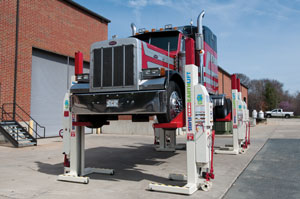
As fleet operators nationwide strive to grow business and improve margins, many also are embracing the benefits of an eco-friendly approach. According to heavy-duty lift manufacturer Stertil-Koni, “going green” not only improves the environment, it also can help the bottom line.
Stertil-Koni’s Earth Lift is a case in point. As the first hydraulic “green” mobile lift, its columns are made from 98% recyclable components. Plus, the Active Energy Retrieval System delivers 35% more lifting cycles at maximum load and the operator can see savings via an on-screen display. The lift uses a closed hydraulic system that contains bio-degradable oil and its batteries are 100% recyclable.
Also noteworthy, the company said, is its Eco Lift, which is an ultra-shallow, full-rise in-ground axle engaging scissor lift with capacity up to 90,000 lbs. The lift uniquely combines high pressure, low volume hydraulics and only requires 3.5 gal. of fluid per scissor. It can be utilized in existing workshop pits and even at locations with high water tables, the company added.

